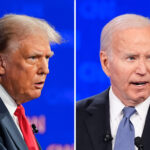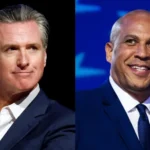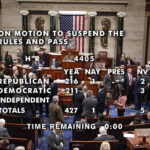JD Vance Visits Indiana Amid Trump Redistricting Push/ Newslooks/ WASHINGTON/ J. Mansour/ morning Edition/ Vice President JD Vance visits Indiana to discuss potential redistricting as Trump urges GOP states to redraw maps before 2026. The Trump administration wants to expand Republican control of the House by shifting district lines mid-decade. Democrats and watchdogs warn the move is unconstitutional and purely partisan.
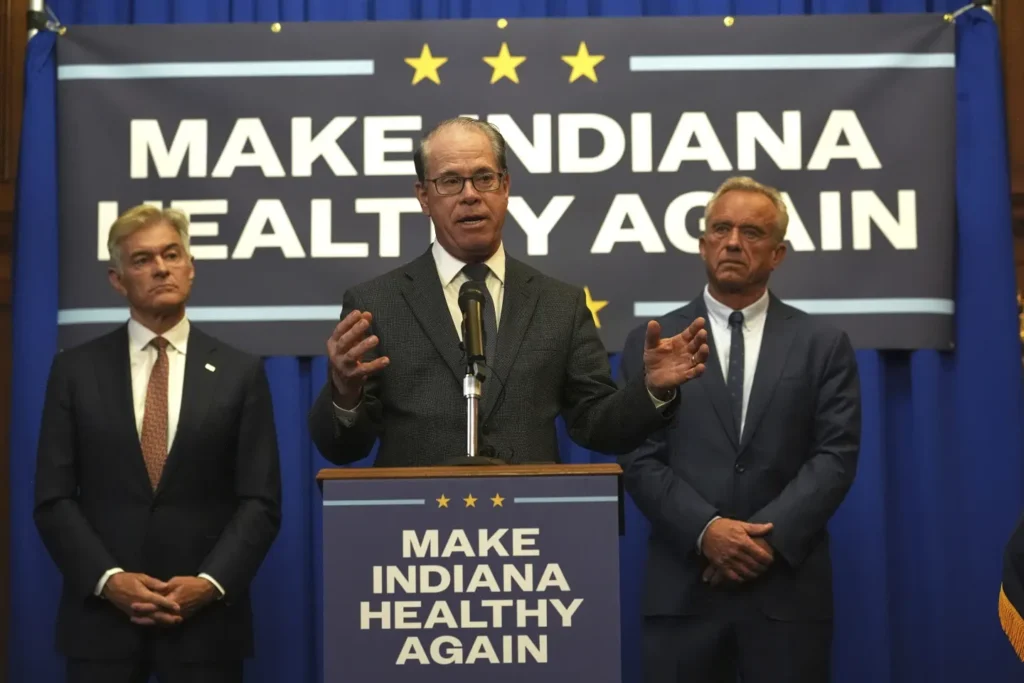
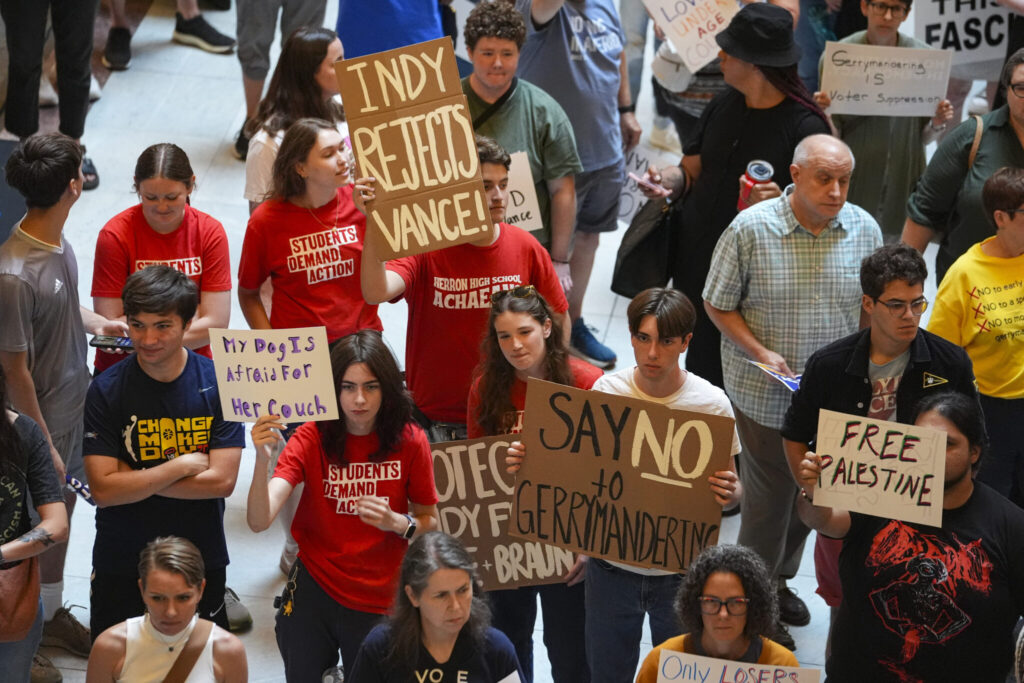
Trump Redistricting Pressure + Quick Looks
- VP JD Vance visits Indiana Thursday to meet with GOP leaders.
- Vance and Gov. Mike Braun expected to discuss mid-decade redistricting.
- Trump is pushing Republican-led states to redraw maps to gain House seats.
- The goal: 5+ new GOP seats ahead of the 2026 midterm elections.
- Indiana’s 1st Congressional District seen as a top GOP target.
- Democrats and activists call the plan undemocratic and unconstitutional.
- Rep. Frank Mrvan says Trump is targeting Indiana because his policies are unpopular.
- Gov. Braun would need to call a special legislative session to initiate redistricting.
- Indiana GOP leaders have not committed to taking action.
- Democrats plan protests and a press conference to oppose the move.
- Redistricting maps were already drawn and passed in 2021 without court challenge.
- Common Cause Indiana says mid-decade redraws are fiscally irresponsible and partisan.
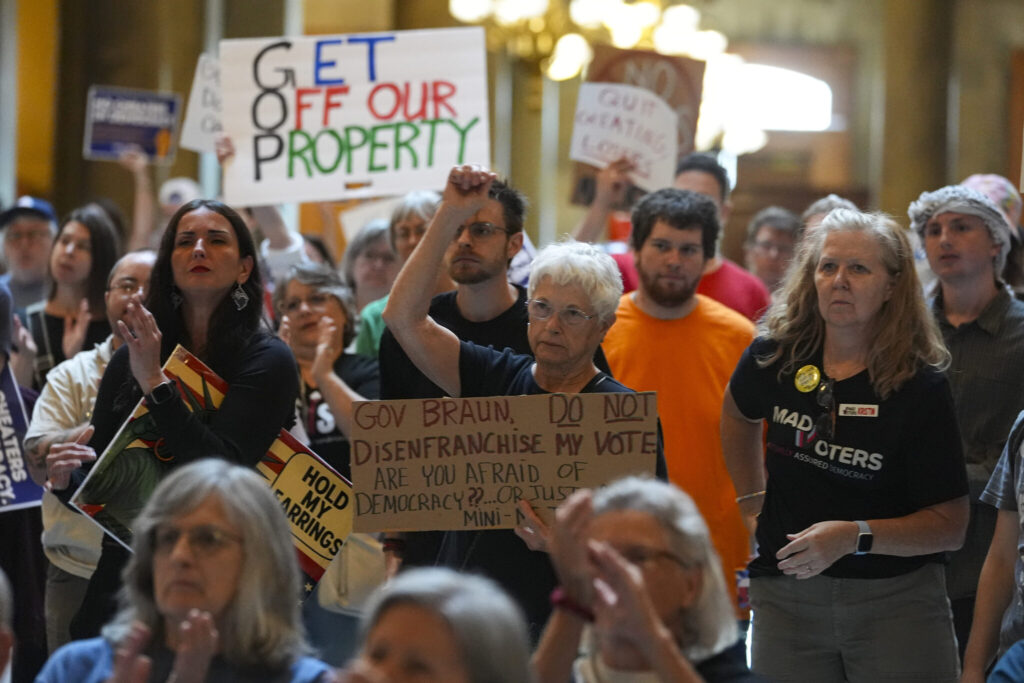
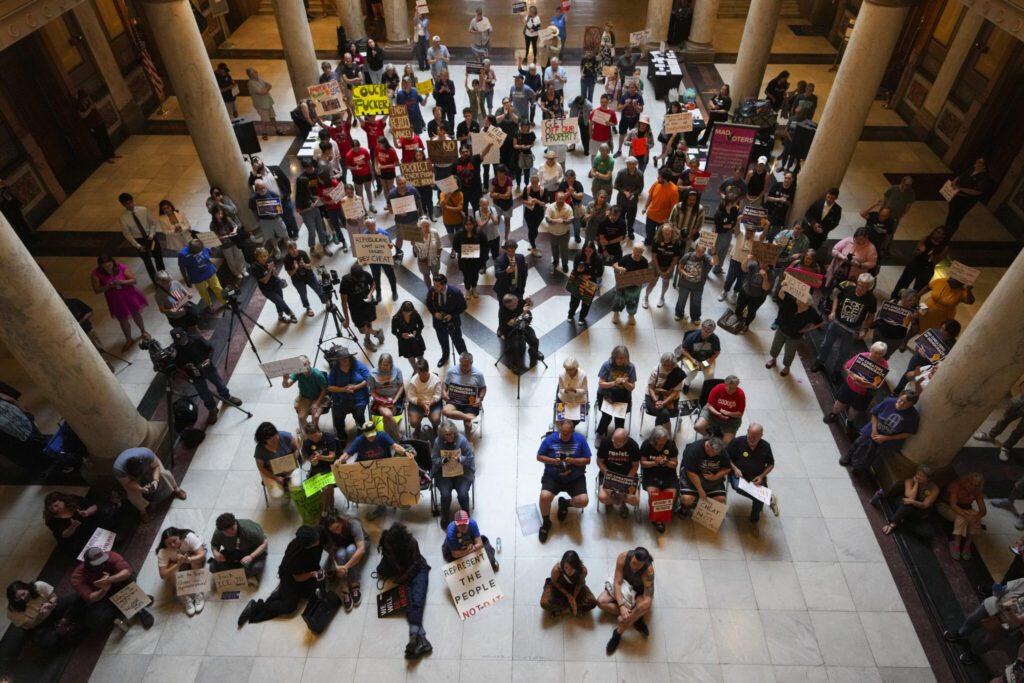
Deep Look
Trump Pressures GOP-Led Indiana to Redistrict Ahead of 2026 Midterms
Vice President JD Vance is visiting Indiana this Thursday to meet with Governor Mike Braun and other Republican officials amid a broader Trump-led push to pressure GOP-controlled states to redraw congressional districts before the 2026 midterm elections.
The goal? To carve out additional Republican-leaning seats by reshaping electoral maps in key battleground and red-leaning states—even if those maps were finalized just four years ago.
Republican Gov. Mike Braun remained noncommittal about a mid-decade redistricting push following his meeting with Vice President JD Vance in Indiana on Thursday.
“We covered a wide array of topics. We listened,” Braun told reporters in response to a question about whether an agreement was reached.
The meeting — which took place amid sustained booing by protesters gathered inside the statehouse — went “pretty good,” Braun said.
Vance’s visit to the state comes amid a push from President Donald Trump’s team to redraw maps “everywhere where redistricting is an option.” A plan in Texas is already well underway, where Republican lawmakers drew a new map that could net Republicans as many as five Republican-leaning seats, and Democrats in the Lone Star state fled in a last-ditch effort to stop the map from passing.
A black curtain hung in front of the governor’s office as Vance met with legislative leaders, and Vance left the statehouse and headed to a local hotel for a Republican National Committee fundraiser.
Private Meetings and Political Strategy
Vance attends a private session with Gov. Braun and then headline a GOP fundraiser in what is widely seen as a test case for Trump’s redistricting ambitions.
Braun confirmed that redistricting will be among the topics discussed, noting, “It looks like it’s going to happen across many Republican states.”
While Indiana currently has a 7-2 Republican majority in its U.S. House delegation, Trump and his advisers believe there’s still room to flip one or two more seats through strategic boundary changes.
Trump’s Broader Redistricting Agenda
The effort is part of a multi-state campaign driven from the White House to solidify Republican control of the House. In Texas, Democrats successfully stalled a similar redistricting vote earlier this week. Now the focus shifts to Indiana—a deep red state but one with a handful of competitive or vulnerable Democratic districts, including:
- Indiana’s 1st District, held by Democrat Frank Mrvan, covering the industrial cities near Chicago.
- Indiana’s 7th District, centered around Democratic-heavy Indianapolis in Marion County.
Mrvan, who has comfortably held his seat in recent cycles, criticized the move as a partisan power grab.
“They know that their only hope to maintain control is to pressure the Indiana General Assembly to violate the Indiana Constitution and redistrict U.S. House seats mid-decade,” Mrvan said.
Legal and Political Pushback
Opponents, including Democratic lawmakers and voting rights groups, argue that redrawing district lines outside of the usual 10-year cycle is unconstitutional, unnecessary, and politically motivated. A protest and press conference are scheduled for Thursday by the state’s two Democratic members of Congress.
Common Cause Indiana, a nonpartisan government watchdog, slammed the potential plan as wasteful and unjustified. “I don’t think there is any way they could rationalize spending taxpayer dollars to come back to Indianapolis to redraw maps that were just drawn four years ago for purely partisan purposes,” said Executive Director Julia Vaughn.
Legal Gray Area and Legislative Inertia
Under Indiana law, Gov. Braun would need to call a special legislative session to initiate any redistricting process, but the power to draw maps lies exclusively with lawmakers. While Braun is a close ally of Trump, he has not yet signaled firm support for a mid-decade redraw.
Legislative leaders Todd Huston (House Speaker) and Rodric Bray (Senate President Pro Tem), who oversaw the 2021 redistricting process, have remained silent on Trump’s push. Both previously called the current maps “fair” and “reflective of Indiana’s political landscape.”
Should a special session be called, the GOP supermajority in both chambers means Democrats would have no procedural tools to block it.
Pence’s Shadow and Party Tensions
Indiana is also the home state of former Vice President Mike Pence, whose more traditional, measured approach to governance still resonates with some Republican lawmakers. The Trump-Vance push for redistricting may test the limits of party unity in a state where Pence’s influence remains a factor.
Still, the momentum behind the move is building across Republican leadership nationwide. As Trump prepares for the 2026 elections, this redistricting campaign is seen as a key tactic to solidify power in the U.S. House, especially with public approval of his administration fluctuating amid economic uncertainty and policy backlash.



